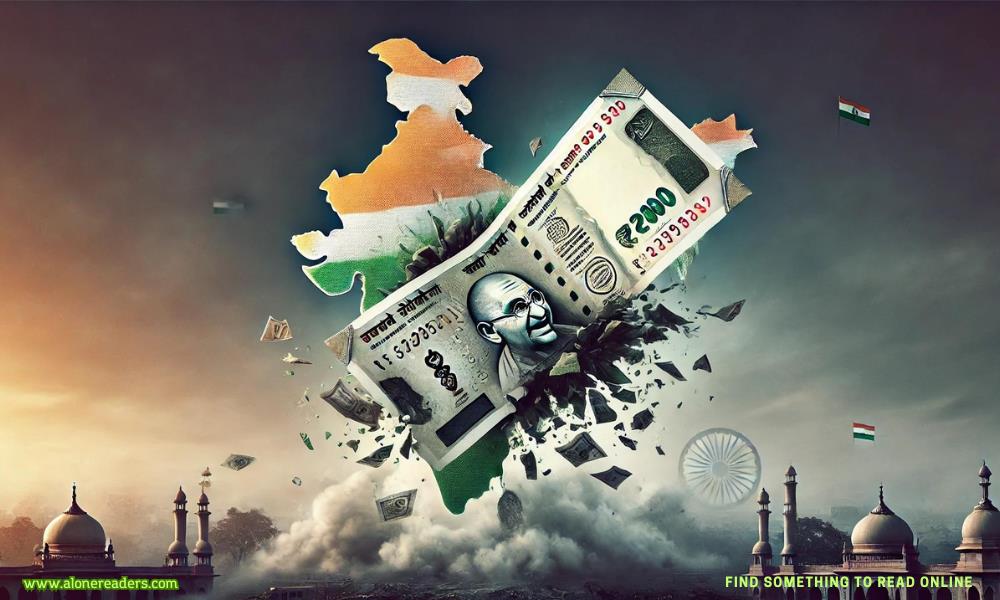
On the evening of November 8, 2016, India's Prime Minister, Narendra Modi, made an unexpected announcement that sent shockwaves across the nation. In a televised address, he declared that, effective immediately, ₹500 and ₹1,000 banknotes would no longer be legal tender. These high-denomination notes accounted for approximately 86% of the currency in circulation, and the sudden withdrawal of their status as legal currency was a bold move aimed at combating black money, counterfeit currency, and corruption. This decision, known as demonetization, led to what can be described as a sudden economic reset in the world's second-most populous country.
The objectives behind demonetization were clear. The Indian government sought to tackle the issue of unaccounted wealth, often referred to as black money, which was believed to be stashed away in cash form to evade taxes. Additionally, there was a pressing need to curb the circulation of counterfeit currency, which was allegedly being used to fund illegal activities, including terrorism. By demonetizing the existing high-value currency notes, the government aimed to flush out illicit wealth, disrupt illegal activities, and promote a move towards a more transparent, digital economy.
However, the implementation of demonetization was not without its challenges. The immediate impact was one of widespread confusion and chaos. Millions of Indians, particularly those in rural areas who relied heavily on cash transactions, found themselves suddenly without usable currency. Long queues formed outside banks and ATMs as people scrambled to deposit their old notes and withdraw new ones. The government imposed strict limits on cash withdrawals, exacerbating the situation. The Reserve Bank of India (RBI) struggled to print and distribute the new ₹500 and ₹2,000 notes, leading to severe cash shortages that lasted for weeks.
For many small businesses and daily wage earners, the impact was devastating. With cash in short supply, transactions ground to a halt, and economic activity slowed considerably. The informal sector, which makes up a significant portion of India's economy, was particularly hard hit. Farmers, street vendors, and small shopkeepers found it difficult to conduct their day-to-day business, and many were left struggling to make ends meet. The agricultural sector, already reeling from a series of poor harvests, faced additional stress as farmers were unable to access the cash needed to purchase seeds, fertilizers, and other essential supplies.
While the short-term pain was evident, the long-term benefits of demonetization have been a subject of much debate. The government's push towards digital payments did see a significant increase in electronic transactions, as people turned to mobile wallets and online banking in the absence of cash. However, the extent to which demonetization succeeded in curbing black money is still unclear. Critics argue that much of the illicit wealth was held in assets such as real estate and gold, rather than cash, and therefore was unaffected by the move. Moreover, nearly all of the demonetized currency eventually made its way back into the banking system, raising questions about the effectiveness of the policy in eradicating black money.
The economic impact of demonetization was also far-reaching. India's GDP growth slowed in the months following the announcement, and the disruption to the economy had lasting effects on employment and business confidence. The RBI reported a sharp increase in non-performing assets (NPAs) as businesses struggled to repay loans in the face of declining revenues. The slowdown in consumer spending also affected key sectors such as real estate, automobiles, and consumer goods.
Despite the challenges, the Modi government has defended demonetization as a necessary step towards formalizing the economy and promoting transparency. The move was part of a broader strategy to encourage digital transactions, increase tax compliance, and reduce the reliance on cash. In the years since demonetization, the government has introduced several measures to promote financial inclusion and digital payments, such as the Pradhan Mantri Jan Dhan Yojana (PMJDY) and the Unified Payments Interface (UPI). These initiatives have helped to bring more people into the formal banking system and have contributed to the growth of the digital economy.
Demonetization also had significant political implications. While the policy was initially met with widespread public support, particularly among those who viewed it as a bold move against corruption, it also led to criticism and protests. Opposition parties accused the government of mismanagement and questioned the rationale behind the decision. In the 2017 Uttar Pradesh state elections, however, the Bharatiya Janata Party (BJP) under Modi's leadership won a decisive victory, which some analysts attributed to the public's approval of the demonetization drive.
In conclusion, Modi's demonetization of 2016 was a watershed moment in India's economic history. It was a sudden and unprecedented move that aimed to reset the economy by tackling black money, corruption, and counterfeit currency. While the policy achieved some of its objectives, it also exposed the vulnerabilities of India's cash-dependent economy and highlighted the challenges of implementing such a large-scale reform in a country of over 1.3 billion people. The long-term impact of demonetization on the Indian economy and its effectiveness in achieving its stated goals continue to be debated, making it a topic of enduring relevance in discussions about economic policy and governance in India.